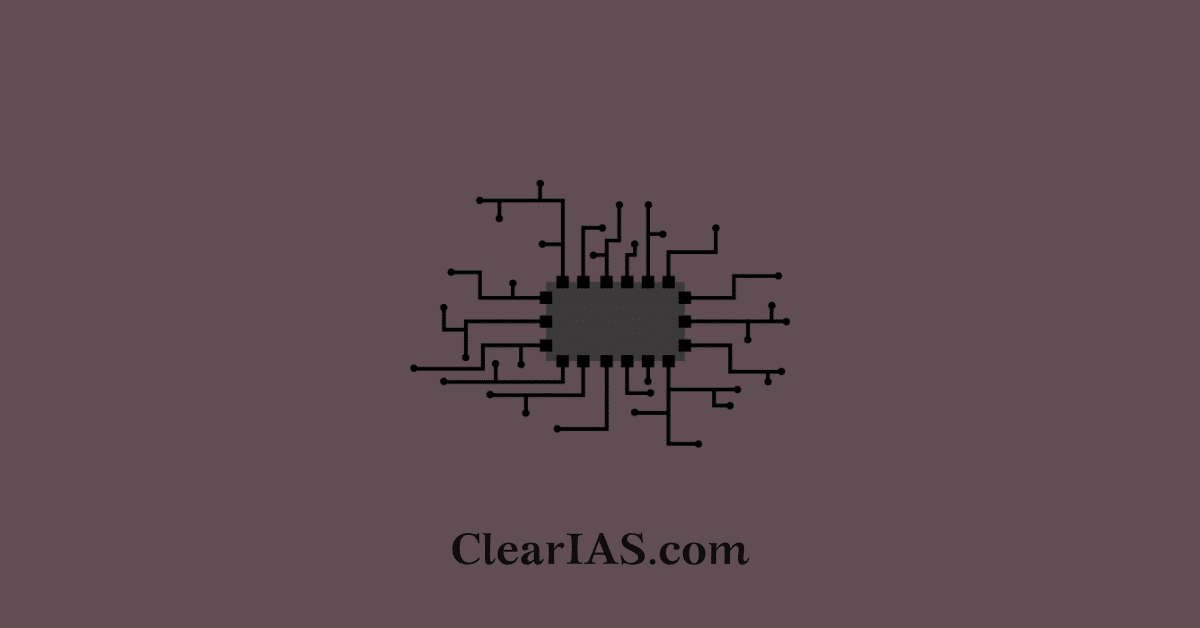
VIKRAM 32-bit microprocessor is India’s first indigenously developed 32-bit launch vehicle-grade microprocessor. This processor, designed by ISRO’s Vikram Sarabhai Space Centre (VSSC) and the Semiconductor Laboratory (SCL), Chandigarh, marks a watershed moment in India’s journey toward semiconductor self-reliance. Read here to learn more.
At Semicon India 2025, the Prime Minister of India was presented with the Made-in-India VIKRAM3201, a 32-bit launch vehicle-grade microprocessor, marking a historic stride in India’s semiconductor journey.
Developed indigenously by ISRO’s Vikram Sarabhai Space Centre (VSSC) and the Semiconductor Laboratory (SCL), Chandigarh, this processor symbolises the coming of age of India’s domestic chip ecosystem and the push towards Atmanirbharata (self-reliance) in critical technologies.
Evolution of the VIKRAM Series
- VIKRAM1601 (2009): A 16-bit processor that became the workhorse of ISRO’s launch vehicle avionics for over a decade.
- VIKRAM3201 (2025): An advanced 32-bit successor, designed with higher computational power, radiation tolerance, and resilience to the extreme conditions of space.
- KALPANA3201: Developed alongside, it is optimised for open-source toolchains, making it easier to integrate into India’s growing semiconductor R&D ecosystem.
This generational leap ensures that India reduces dependence on imported processors for launch vehicles and critical missions.
Technical Features of VIKRAM 32-bit Microprocessor
- Radiation-hardened design for spaceflight reliability.
- Operates in extreme temperatures from –55°C to +125°C.
- Incorporates a custom instruction set architecture tailored to the Ada programming language, widely used in aviation and defense for safety-critical systems.
- Handles floating-point computations and complex guidance, navigation, and control algorithms.
- Validated in space via the SpaDeX Mission (PSLV-C60), proving its dependability for future ISRO launches.
Together, these features make VIKRAM3201 not just a processor, but a strategic enabler for India’s deep space ambitions.
Strategic Significance
- Space Autonomy: Reduces reliance on foreign microelectronics for launch vehicle avionics.
- Dual-Use Technology: Though designed for rockets, the architecture could find applications in defense, aviation, and high-security computing.
- Technology Sovereignty: A critical milestone in achieving self-reliance in semiconductor design and manufacturing.
- Global Competitiveness: Positions India alongside advanced spacefaring nations with indigenous processor capabilities.
Semicon India 2025 and the Broader Semiconductor Push
The launch of VIKRAM3201 came against the backdrop of Semicon India 2025, held under the theme “Building the Next Semiconductor Powerhouse.”
The event underscored India’s strategy to become a key player in the global semiconductor value chain by:
- Strengthening Chip Design: Support for fabless startups, incubation hubs, and open-source EDA tools.
- Boosting Manufacturing: Ongoing negotiations with global majors for establishing fabs, packaging, and ATMP facilities in India.
- Commercialising R&D: Moving from prototypes in research labs to scalable, market-ready technologies.
- Developing Talent: Large-scale skill development programs in VLSI design, semiconductor physics, and electronics engineering.
- Global Partnerships: Collaborations with U.S., Japan, Taiwan, and European chipmakers, while securing India’s place in strategic supply chains.
Significance
Globally, semiconductors are the backbone of AI, 5G, quantum computing, electric mobility, and space exploration.
For India, which aims to be a $10 trillion economy by 2047, self-reliance in semiconductors is as much about economic growth as it is about strategic security.
The VIKRAM3201 embodies this vision: a homegrown chip designed for one of the most challenging environments, space, and yet symbolic of India’s broader entry into the elite league of semiconductor nations.
How are Semiconductors Fabricated?
Semiconductor fabrication is one of the most complex and precise manufacturing processes in the world. It happens inside ultra-clean fabrication plants. Here are the main steps:
- Purification and Wafer Preparation
- Start with silicon, the most common semiconductor.
- Purify sand (silica, SiO₂) – grow a single-crystal silicon ingot – slice it into thin wafers (like glass plates).
- Wafers are polished to be atomically smooth.
- Oxidation and Layering
- Grow a thin layer of silicon dioxide (SiO₂) on the wafer surface.
- This acts like insulation and a foundation for circuits.
- Photolithography (like “printing” a blueprint)
- A light-sensitive chemical called photoresist is spread on the wafer.
- Ultraviolet (UV) light is shone through a mask (like a stencil) to transfer tiny circuit patterns onto the wafer.
- The exposed areas are chemically etched away, creating the intricate shapes of transistors.
- Etching and Doping (controlling conductivity)
- Etching: Removes unwanted material, leaving only the desired circuit patterns.
- Doping: Adding tiny amounts of elements (like phosphorus or boron) to the silicon to control how it conducts electricity – just like adding salt changes the taste of water.
- Deposition and Metallization
- Layers of metals (like copper or aluminium) are deposited to form electrical connections (wires) between transistors.
- Modern chips have billions of transistors, stacked in many layers.
- Packaging and Testing
- The wafer is cut into tiny individual chips.
- Each chip is packaged (with protective casing and connectors) and rigorously tested for performance, speed, and defects.
Conclusion
The VIKRAM3201 is not just a microprocessor; it’s a marker of India’s transformation from a chip consumer to a chip creator, aligning with both Atmanirbhar Bharat and India Semiconductor Mission (ISM) goals.
Related articles:







Leave a Reply